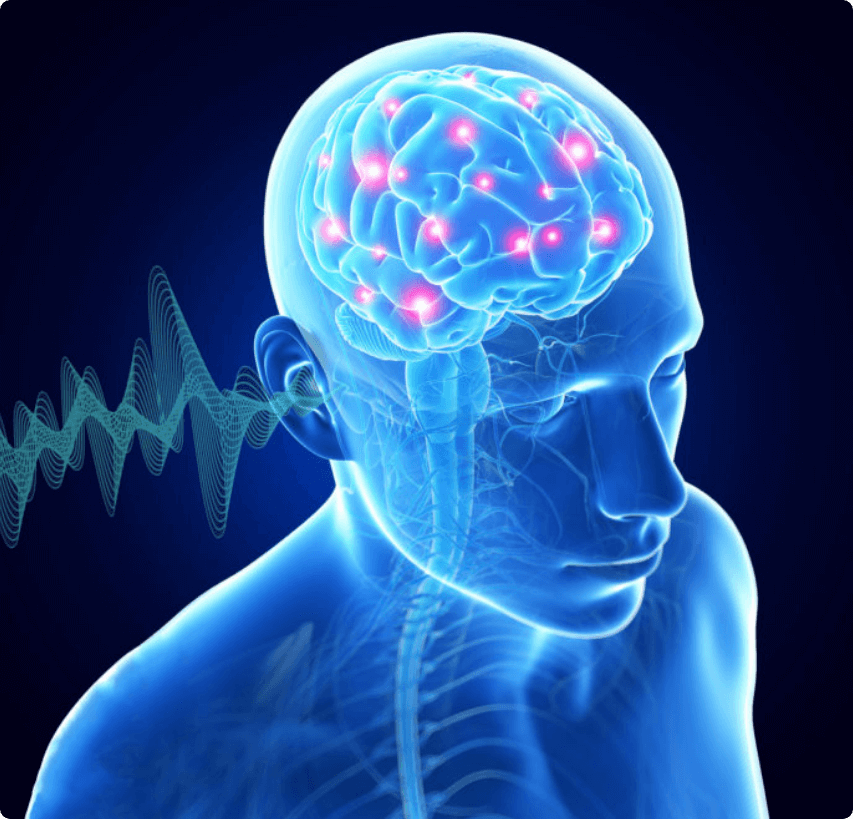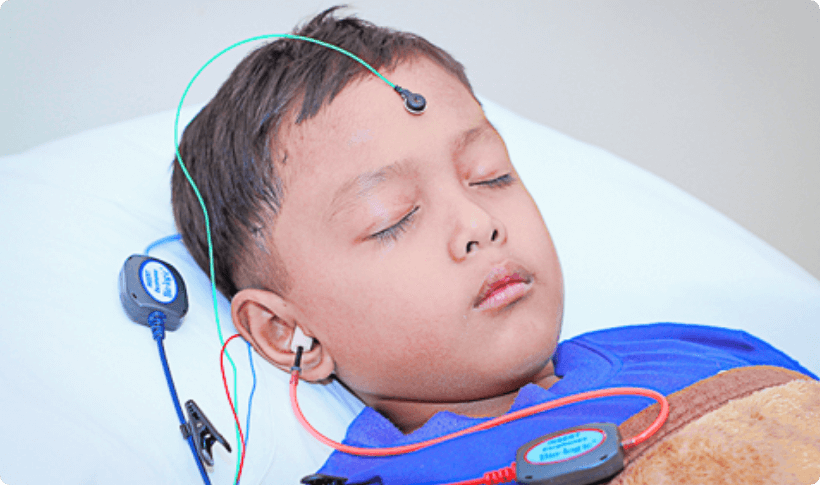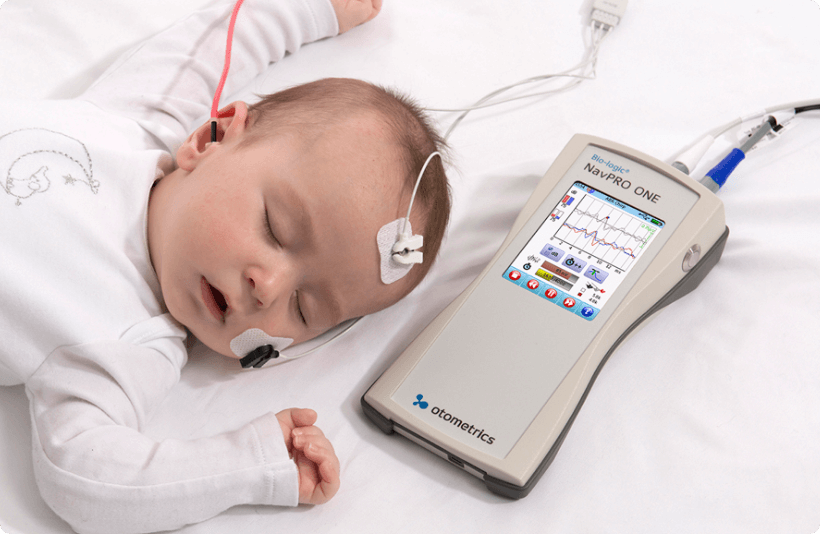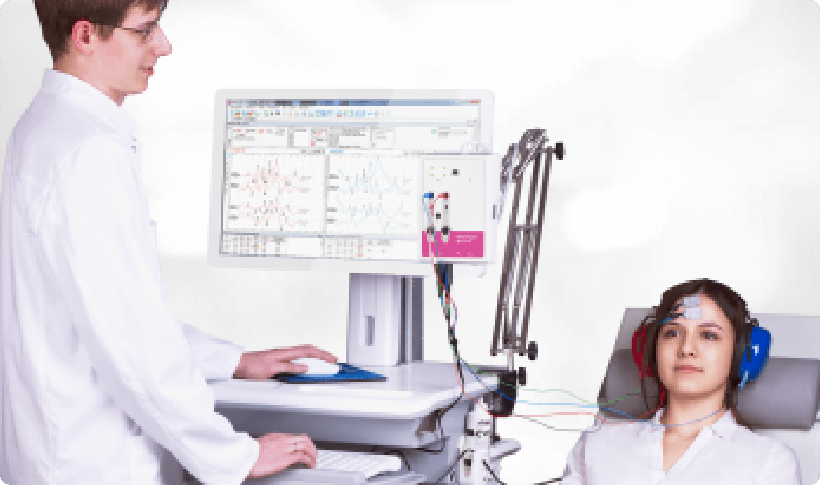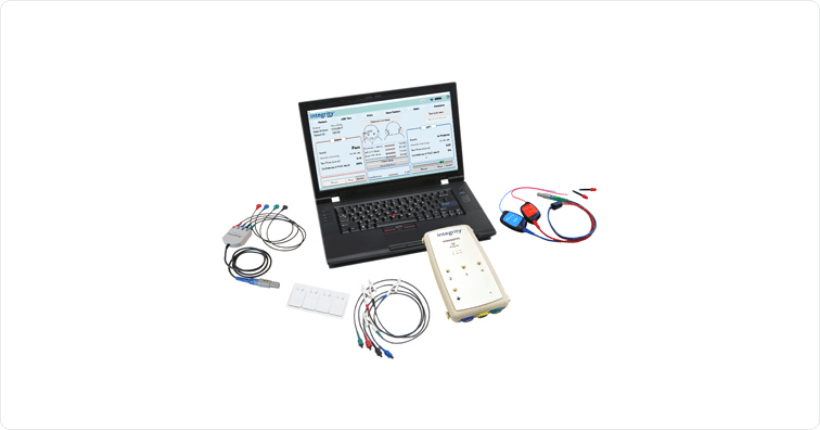What is the ASSR test?
A steady-state auditory response (ASSR) is an electrophysiological response elicited by a repetitive (rapid) auditory input. Typically, an ASSR employs frequency-specific stimuli (0.5, 1, 2, 4 kHz) to generate an approximated audiogram. In other words, it’s a test for figuring out what the cutoff point is.
Unlike the auditory brainstem response (ABR), which measures the reaction’s amplitude and latency in the time domain, the ASSR measures the response’s amplitudes and phases in the frequency domain. Responses are recognized using a mathematical detection technique based on statistics to identify whether or not a response is there. Another distinction is that, with frequency-specific threshold ABR, only one frequency per ear may be tested at a time. ASSR enables binaural testing; four frequencies are delivered simultaneously to each ear (eight simultaneous presentations).
